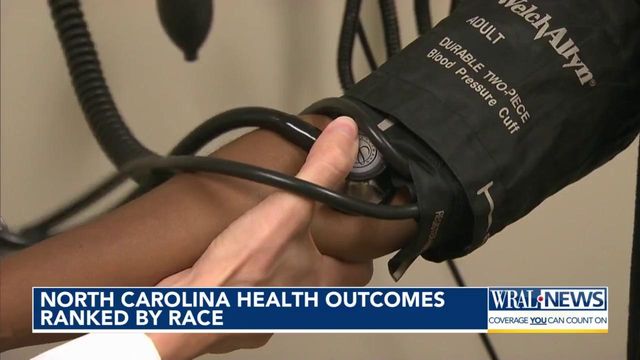Study reveals role of race in health outcomes
A new report from The Commonwealth Fund is shining light on racial disparities in healthcare within the U.S.
The fund has analyzed healthcare systems across the country for nearly 20 years.
The 2024 report released Thursday measured each state on 25 health metrics related to health care access, quality and service use, and health outcomes.
The report looked at five populations: Black, white, Hispanic, American Indian/Alaska Natives (AIAN), and Asian American, Native Hawaiian and Pacific Islander populations (AANHPI).
In North Carolina, white populations scored the highest for health outcomes, ranking in the 82nd percentile compared to other states.
AIAN had the second-best outcomes. The population ranked in the 71st percentile.
Black people were ranked third in the 40th percentile, followed by AIAN in the 28th percentile.
Despite being the second-lowest ranking in the state, AIAN populations in North Carolina fared better than in other states. The state ranked first out of ten states where calculation was possible.
Hispanic populations in North Carolina had the lowest health system performance overall. The group was ranked in the 13th percentile.
Health disparities among Hispanic populations were further highlighted in the study which revealed 20% of Hispanic adults reported not receiving medical care due to lack of insurance.
Compared to 47 states with large Hispanic populations, North Carolina’s health system ranks 37th.
David Radley with The Commonwealth Fund called the findings an “eye-opening report."
“Communities with high concentrations of African Americans and Hispanic people, they tend to have lower access to primary care. Anything we can do to enhance access to primary care and strengthen the primary care systems in those communities will help,” he said.
The study highlighted North Carolina’s Medicaid efforts on that same front. It used the state’s prospective payment model as an example of things other states could do to strengthen primary care access.
One of the metrics analyzed in the study was premature deaths. These are defined as deaths before the age of 75 due to conditions deemed preventable.
The report showed nationwide, Black people are more likely than AANHPI, Hispanic and white people to die from avoidable causes.
Average premature death rates were the lowest among AANHPI communities.
WRAL previously spoke with UNC Health Cardiologist Dr. Christopher Kelly regarding North Carolina’s premature death rates.
The cardiologist explained the state had seen an 11% increase in premature deaths due to a rise in more sedentary lifestyles.
“North Carolina has a lot going for it, and I love living here, but healthy lifestyles are unfortunately a little less common here than in other parts of the country. A lot of people spend a lot of time in their car rather than on their feet exercising,” Kelly said. “There’s a love of barbecue and fried food that, though delicious, are really not good for your heart.”
Kelly said cutting back on takeout, reducing screen time and spending more time outdoors can all help lower your risk of various diseases often linked to premature deaths.












